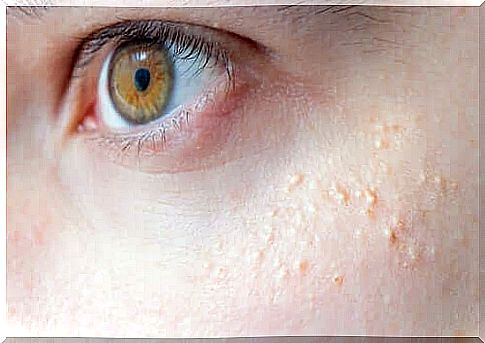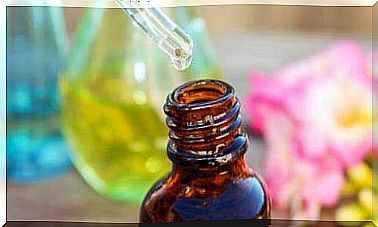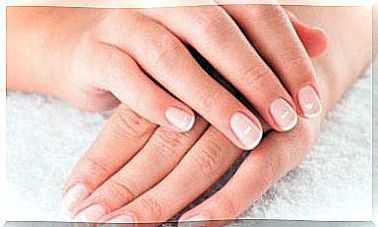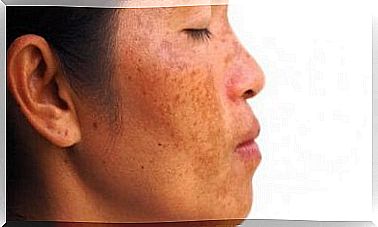Natural Remedies For Keratosis Pilaris

Today we are going to talk about natural remedies for keratosis pilaris. To improve keratosis pilaris, dermatologists normally recommend exfoliating products, moisturizing creams, and topical retinoids such as tretinoin and tazarotene, which promote cell regeneration and help clear hair follicles.
However, as the American Academy of Dermatology points out, this skin condition is harmless and does not require specific treatment in most cases.
However, if you suffer from discomfort, such as itching, dryness or poor skin condition, you can try some treatments. In this case, natural remedies for keratosis pilaris can be helpful.
When it comes to natural remedies, remember that this should not be your first treatment and there is a lack of evidence to prove their effectiveness.
Nevertheless, they are safe additional treatment options that can help relieve your discomfort temporarily. Do you want to learn more about them? Then read on!
What is keratosis pilaris?
Keratosis pilaris is a common and benign dermatological condition that causes small, rough bumps on your skin. Because of their appearance, some people call them “goosebumps.” Also, people sometimes confuse them with pimples or acne.
The most affected areas are normally the upper arms, thighs, cheeks and buttocks. However, other than aesthetics, they normally do not cause discomfort, pain or itching. Usually, only in times like winter, your skin gets drier and rougher, which can cause discomfort.
Dermatologists haven’t been able to pinpoint the exact causes, but they know it’s a buildup of keratin, a type of protein that helps protect the skin from harmful and infectious agents. Keratin causes small blockages in the hair follicles and thereby causes the irregularity on the skin.
Small children, adolescents, people with dry skin and people who are overweight are more likely to have this problem. In most cases, however, it improves after a few years and does not require treatment.
Can you treat keratosis pilaris?
As the Mayo Clinic points out, a number of treatments help improve the appearance of affected skin. A doctor or dermatologist can therefore recommend medicated creams if you still experience bumps and dryness after some basic care.
Among other things, they can recommend products with:
- urea
- lactic acid
- retinoids
- salicylic acid
You can also supplement the treatment with some natural remedies that also seem to improve the appearance of your skin. Below we tell you more about some possibilities.
Natural Remedies For Keratosis Pilaris

There is no cure that can cure or eliminate keratosis pilaris. Even if you use pharmaceutical products, the bumps can appear and disappear over many years. Despite this, it often gets better on its own over time and is less noticeable.
A number of natural remedies can be helpful when it comes time to treat your symptoms. However, most of them stem from popular beliefs and lack scientific support.
Nevertheless, there is no problem if you want to try them, as most of them are completely safe. So let’s take a look at some options with natural remedies for keratosis pilaris.
Warm baths

Warm baths can help improve some of your keratosis pilaris symptoms. According to an article from the Cleveland Clinic, most patients with keratosis pilaris can improve their symptoms by changing their routine to prevent dry skin.
For this reason, you should not take a warm bath for more than 15 minutes. You should not take long, hot showers, as these cause changes in your skin’s natural oils and increase dryness. It is also useful to use neutral or moisturizing soap, especially if your skin is often too dry.
Gently exfoliate
By carefully learning to exfoliate, you can remove dead skin cells that are stuck to the surface of your skin. This will significantly improve the appearance of your skin. The American Academy of Dermatology recommends using a vegetable sponge or a rough towel.
However, it is important to rub gently, in a circular motion, as rubbing too roughly can break blocked hair follicles and make the situation worse. When you’re done, dry yourself with a dry towel and apply a moisturizing cream.
coconut oil
There is not enough evidence to prove the effectiveness of coconut oil on the symptoms of keratosis pilaris. Despite this, it is used as an adjunct treatment to improve symptoms.
It moisturizes and it helps to reduce the rough feeling of your skin. You can even combine it with a little natural sugar to make a homemade exfoliant.
A review of studies published in the scientific journal, International Journal of Molecular Sciences notes that coconut oil is anti-inflammatory and helps repair the skin barrier. It also has antioxidant properties and helps protect your skin from the negative effects of the sun.
Colloidal Oatmeal

You can use colloidal oatmeal as part of your skin care routine for keratosis and other skin conditions to keep your skin hydrated and protected. This ingredient is a type of oats ground into a fine powder, which can be added to creams, baths and other skin care products.
According to a study published in the Journal of Drugs in Dermatology, it is a natural product with anti-inflammatory and antihistamine properties that may help improve the symptoms of:
- atopic dermatitis
- psoriasis
- pimples caused by drugs
- other skin conditions
What else can you do to improve your keratosis pilaris symptoms?
As you have seen, a number of natural remedies can be helpful when it comes to improving your keratosis pilaris symptoms. However, it can also help to use medicinal products, wear loose clothing and install a humidifier in the house.
The latter option adds moist air to the room and helps reduce itchy breakouts. Of course, it’s also important to see your dermatologist, especially if the pimples get worse or if you notice anything abnormal about them.
A professional can suggest some tests to determine if your symptoms are due to another problem, or they can point you to specific treatments that may help.









